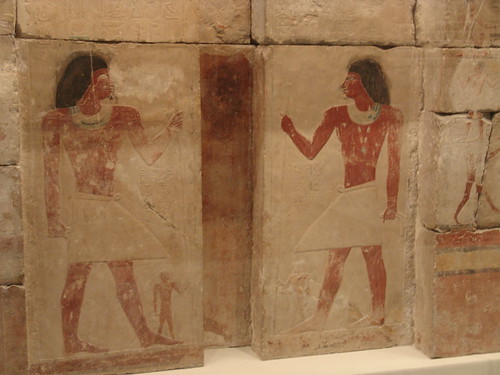A lighter chapter to the ongoing issue of repatriating Egypt’s treasures will close today, as an ancient shrine fragment touches down on Egyptian soil after a year of international co-operation. The red granite chunk, part of a shrine, or ‘naos’, was bought by New York’s Metropolitan Museum of Art from a private collector last October, with the sole intent to send it back to its home nation.
Today sees the fragment of the shrine, which commemorates King Amenemhat I, the first pharaoh of the 12th Dynasty (1991 – 1962 BC), finally return to Egypt after a combined effort between the museum and Egypt’s Supreme Council of Antiquities. SCA chief Zahi Hawass praised the move as a “great deed”, stressing it is the first time a museum has bought an object with the expressed purpose of repatriating it. The shrine the piece belongs to can now be found in the Ptah Temple of Karnak, Luxor.
This episode is a high note in Dr Hawass‘ long-running campaign to repatriate thousands of Egypt’s most treasured items. The Met will certainly be on better terms with the SCA than Paris’ Louvre, whose experts were recently banned from excavation in Egypt following the ‘theft’ of objects from a Theban tomb. The famous French museum has since promised to return the items. And Dr Hawass is still pursuing the British Museum and Berlin’s Neues Museum, over their continued refusal to return the Rosetta Stone and Bust of Nefertiti respectively.
Got something you want Heritage Key to report – or do you just want to get something off your chest? Don’t hesitate to contact us either via the comments box below, our contact page or by emailing me directly.
